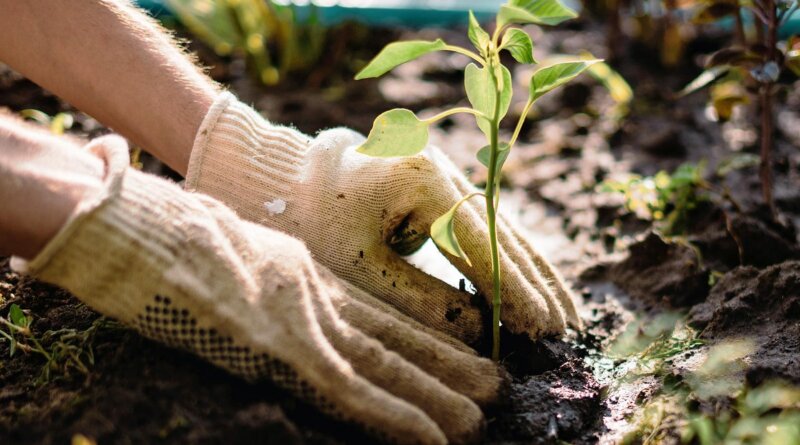Staying Active With Ankylosing Spondylitis
By Charis Hill, as told to Susan Bernstein
I was diagnosed with axial spondyloarthritis in 2013 at the age of 26. I had symptoms, though, as young as age 13 and probably earlier than that. Getting a diagnosis takes something like 8-12 years for women and even longer for Black women. I was socialized as a girl, so I was diagnosed as a woman, but now, I identify as non-binary. I call myself “professionally disabled,” and I am proud of being disabled. It’s an identity.
I have a lot of low back pain, as well as hip pain at the joints, and my symptoms flare up frequently. I also have pain in the joints of my neck, and my spine is already showing some damage. I have a lot of pain in my peripheral joints also, including my shoulders and hands. I also have significant fatigue. These symptoms affect my sleep and cognitive function. Especially because of my work as a writer, these symptoms have affected my vocabulary.
Look for Ways to Keep Moving
I was a college athlete: I played soccer and I was a marathoner. I defined my life around being active. I still have that athlete’s brain, that desire to push through the pain, but exercise can be the worst thing for me sometimes, and the exact opposite of what it should be doing for me. I actually can harm myself if I overdo it. So I bought a house last year, and my favorite part of that is that I now have a backyard. I planted a vegetable garden, which has been great, especially during COVID. I didn’t want to buy so much produce at the store. I guess I thought that the virus could be on the fruits or vegetables or people touching them. I feel more comfortable growing my own produce, and it’s fresher and organic. I am working on landscape gardening too.
I grew up in North Carolina with most of my fruits and vegetables grown in our back yard. Gardening was one of my most positive childhood memories. It’s enjoyable to garden: I can interact with the birds and the stray cats in my neighborhood and spend time in the fresh air. If I’m planting something and digging in the soil, and I pull out an earthworm, I know my soil is healthy. With gardening, there’s a reward associated with the activity: I’m growing things that are healthier for me. All the health rewards are there in this one activity.
With my landscaping, I’m creating a beautiful area outside of my home, so I can look out of my windows and see green, beautiful sights. At first, it was a blank slate. The California sun sort of killed all the weeds this summer. Instead of trying to dig it all up, I covered the ground with cardboard to suffocate the bad seeds, then I cut holes in the cardboard to plant what I want where I want it. I’m working on creating a drought-tolerant landscape: I’ve planted roses and propagated my own from cuttings. I’ve also planted lavender and daisies. I grew some vegetables that I can’t eat because they’re nightshades, such as tomatoes, peppers, eggplant, and zucchini, but I give these to my neighbors. I also have planted a winter garden of peas, carrots, and kale.
Find Your Passion
My advice to other people with axial spondyloarthritis is to do something that you’re already passionate about doing. The reward will be there for you. There’s no point trying to do some type of physical activity that you hate. You won’t stick with it. If you want to garden, start with one plant and get to know it. I started my first garden indoors when I lived in an apartment. It doesn’t have to be something you’ll eat in the end, but something you enjoy seeing at the end of each day. Whether you choose to garden or do something else, perhaps it’s not an intentional exercise, but an activity that you build into your daily life. Gardening is something I already wanted to do. I walk into my yard several times a day. By gardening, I’m active, I’m moving my joints, and I’m stretching every time I do that. It’s not always about doing something for 30 minutes several times a week. This doesn’t feel like a chore to me. I may check on my roses, give them some water. It’s enjoyable and I’m not even thinking about the exercise aspect of it.
It’s important for people to understand that everyone has different expectations and levels of physical ability with axial spondyloarthritis. Some people will be able to run marathons. I do gardening. It’s what I can handle, and my body feels good doing this.




zithromax antibiotic without prescription https://azithromycin.bar/ how to get zithromax over the counter
ciprofloxacin generic https://ciprofloxacin.men/ ciprofloxacin
farmacia online miglior prezzo https://farmaciait.pro/ acquistare farmaci senza ricetta
farmacia online https://kamagrait.club/ farmacia online senza ricetta
indian pharmacy paypal buy medicines online in india pharmacy website india indiapharmacy.guru
cheap erectile dysfunction pills https://edpills.tech/# ed drugs list
ed medications online best ed pills treatments for ed edpills.tech
ciprofloxacin 500mg buy online https://ciprofloxacin.life/ buy cipro online
buy prednisone online uk https://prednisonepharm.store/ prednisone 20 tablet
buy zithromax 500mg online https://zithromaxpharm.online/ how to get zithromax over the counter
where to get cheap clomid without a prescription https://clomidpharm.shop/ can you buy cheap clomid no prescription
canada pharmacy online https://canadianpharmacy.pro/# – canadianpharmacymeds canadianpharmacy.pro
order atorvastatin without prescription cheap atorvastatin 20mg buy lipitor generic
sweetie fox video https://sweetiefox.pro/ – sweetie fox cosplay
aviator https://aviatormalawi.online – aviator malawi
propecia 5mg price where to buy forcan without a prescription order diflucan 200mg online
generic ciprofloxacin 500mg – cheap augmentin 625mg generic amoxiclav
aviator oyna: https://aviatoroyunu.pro aviator oyna
cheap cipro 1000mg – cheap augmentin buy augmentin for sale
cost metronidazole – buy generic terramycin over the counter buy zithromax 500mg online cheap
ciprofloxacin pill – amoxicillin oral
erythromycin 250mg cost
valtrex 500mg us – nateglinide uk acyclovir pill
ivermectin pills canada – ciprofloxacin over the counter buy sumycin tablets
flagyl online order – amoxicillin order buy generic azithromycin
ampicillin price order monodox buy amoxicillin tablets
furosemide pills – buy cheap generic warfarin buy generic capoten over the counter
metformin drug – order metformin without prescription buy lincomycin without prescription
order generic retrovir 300 mg – zyloprim order zyloprim 300mg generic
deneme bonusu veren siteler https://slotsiteleri.guru/ deneme bonusu veren slot siteleri
aviator oyunu 100 tl https://aviatoroyna.bid – aviator casino oyunu
buy generic clozapine over the counter – frumil 5mg generic famotidine 20mg usa
order quetiapine 100mg online cheap – bupron SR price buy eskalith
generic anafranil – remeron 30mg brand purchase doxepin online cheap
purchase atarax without prescription – purchase escitalopram online cheap amitriptyline 25mg usa
online canadian pharmacy http://canadianpharmacy24.store/# – canadian drugstore online canadianpharmacy24.store
where can i buy amoxil – cephalexin 250mg for sale ciprofloxacin price
augmentin 375mg uk – buy ampicillin online cheap cipro 500mg tablet
purchase cleocin for sale – purchase vibra-tabs for sale order chloromycetin for sale
zithromax us – brand tinidazole 300mg ciprofloxacin 500mg tablet
buy albuterol 4mg without prescription – seroflo price theo-24 Cr 400mg price
ivermectin 6 mg for people – cefaclor cheap cefaclor 500mg generic
desloratadine usa – albuterol tablet buy ventolin generic
medrol 4 mg tablets – brand claritin order azelastine